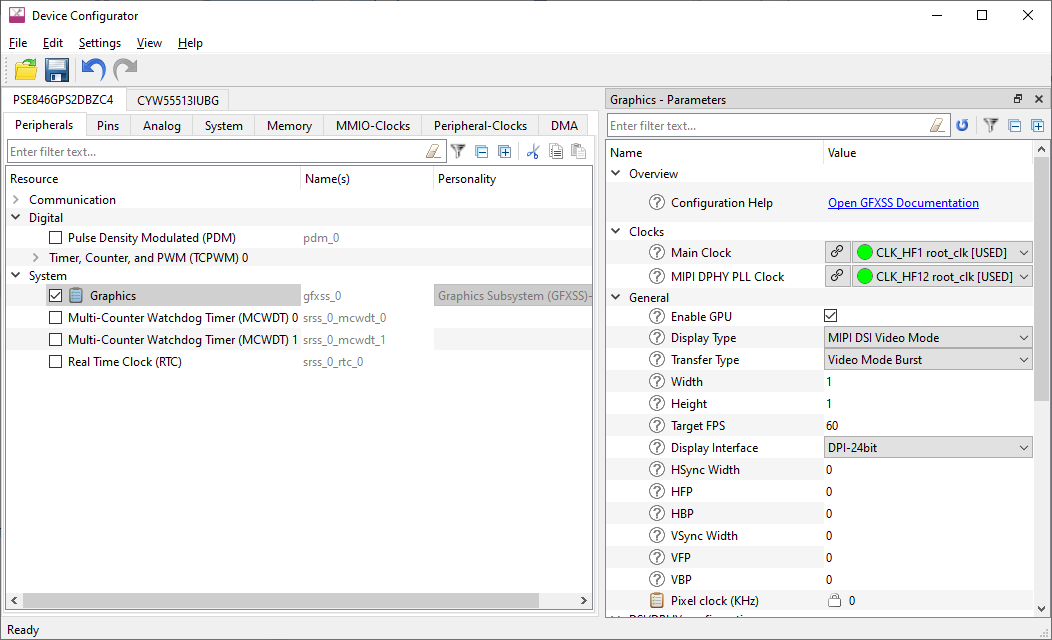GUI description
The Device Configurator GUI contains
Menus
,
Icons
,
Resources tabs
, and several
Panes
used to configure MCU peripherals.

Menus
File
Open
– Opens an existing *.
modus
file. The current file, if any, will be closed.
Close
– Closes the current file. If there are pending changes, you will be prompted to save the file.
Save
– Saves the current file and generates code for the related application. If there are errors in the application, a dialog will indicate such. The file will still be saved.
Open in System Explorer
– This opens your computer’s file explorer tool to the folder that contains the *.modus file.
Recent Files
– Shows up to five recent files that you can open directly.
Update All Personalities
– Use this item to update all resource Personalities (see
Resources tabs
). This opens a dialog showing all the personalities in the design.
For example, if you load a *.modus file made with an older device support library, there might be many warnings in the
Notice List
to update personalities or that a personality is no longer supported. Each warning must be addressed, and doing so one at a time can be annoying. The
Update All Personalities
menu item addresses them all at once.
Exit
– Closes the tool. You will be prompted to save any pending changes.
Edit
Undo
– Undoes the last action or sequence of actions.
Redo
– Redoes the last undone action or sequence of undone actions.
Settings
ModusToolbox™ Settings
: This opens the Centralized Settings tool, an editor that allows you to configure a wide range of settings for your environment, such as proxy settings, content modes, and manifest DB settings. See the Settings tool user guide (insert link) for more details on specific features.
View
Contains toggles to hide or show different
Panes
. All panes are shown by default. There is also a command to show or hide the Toolbar (hidden by default) and reset the view of the configurator to the default.
Help
View Help
– Opens this document.
About
– Opens the About box for version information, with links to open Infineon.com and the current session log file.
Device tabs
The Device Configurator can be used to configure multiple devices. All devices in the BSP display in top-level tabs above the
Resources tabs
.

All the settings for each
Device
tab are configured separately.
Note:
If you need to update or change devices, the best approach is to close the Device Configurator and then use the BSP Assistant. Refer to theBSP Assistant user guidefor details.
Resources tabs
Panes
Icons
When configuring various options with this tool, you will see the following icons:
Icon | Description |
|---|---|
Indicates there is a tooltip. Hover over the icon to display a brief message about the setting. | |
Enables or disables a specific resource. | |
There may be occasions where an error, warning, task, or info icon displays for an enabled resource. See Notice List pane for more details. | |
When shown in Parameters, this indicates that it is a read-only field. When shown for a Resource, this indicates the resource is locked and disabled. There is a tooltip explaining why the resource is locked. | |
When shown for a Resource, this indicates the resource is locked and enabled. There is a tooltip explaining why the resource is locked. | |
After assigning a signal, clicking this icon jumps to the linked resource(s). |